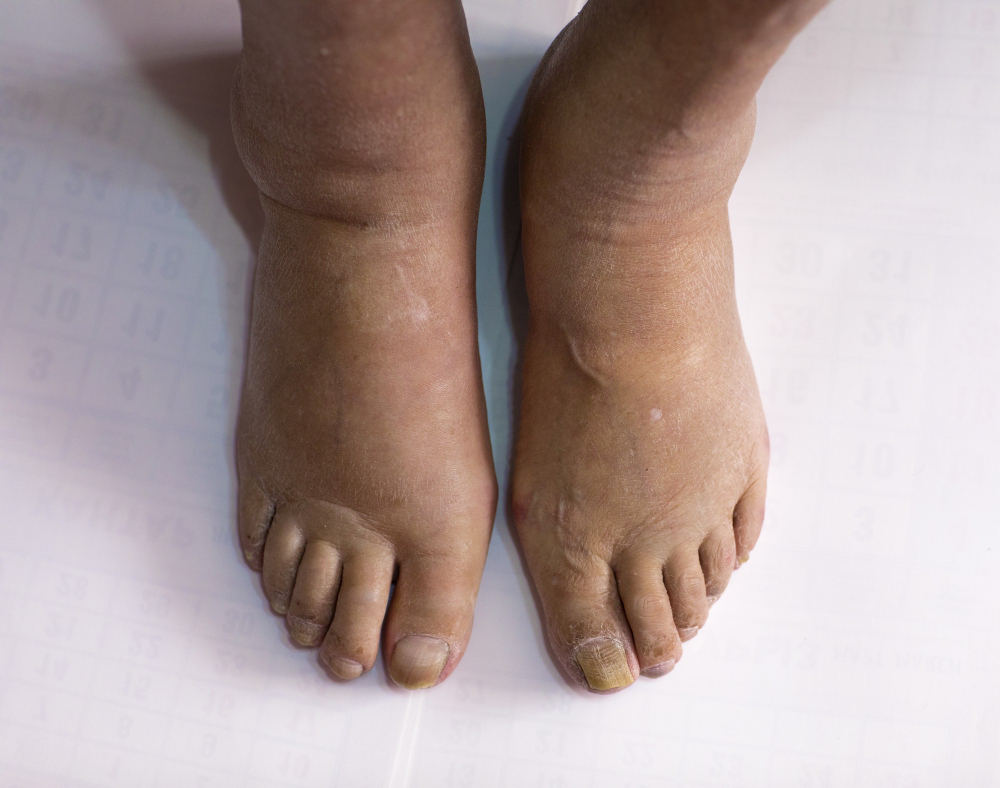Ever noticed your socks leave deep marks around your ankles or your shoes feeling tighter? You might be experiencing pedal edema. It’s simply a fancy term for swelling in your feet and lower legs. This swelling happens when excess fluid builds up in these areas and is more common than you think.
Why should you care about this? Knowing about pedal edema helps you spot early signs and manage it effectively. Ignoring it can lead to discomfort and sometimes more serious health issues. The aim of this blog is to shed light on the symptoms of pedal edema, pinpoint its causes, and go over effective treatments you can try at home.
Understanding conditions like pedal edema is important. Not only can this knowledge improve your quality of life, but it also empowers you to make informed health decisions. Let’s dive deeper into identifying and managing unfortunate swelling in our feet and ankles.
Recognizing Symptoms of Pedal Edema and its Causes
Spotting the symptoms of pedal edema early can save you a lot of trouble. Common signs to watch for include swelling in the feet or ankles. You might notice something called “pitting edema.” This is when you press on the swollen area and it leaves a dent.
But what causes these pesky swellings? Causes of pedal edema vary. It might come from something as simple as sitting too long without moving around. Poor diet, excess weight, and even hot weather can lead to it. Pregnant women often notice it too—yes, pedal edema in pregnancy is quite common due to bodily changes.
The reason behind your swelling can also depend on your age. As we get older, circulation issues can cause edema. Different lifestyles can affect occurrence too. Understanding these causes helps you take the right steps to manage it and seek timely help.
Effective Treatments and Home Remedies for Pedal Edema
So, what are the best ways to manage pedal edema? Initially, tackling underlying health problems solves a lot. But you can make small changes that have big impacts too.
Think about these changes: 1. Compression stockings for pedal edema: These help by applying gentle pressure to keep swelling down. 2. Stay active: Gentle exercises can boost circulation. 3. Watch your salt: High salt intake can make swelling worse.
There are also home remedies for pedal edema. Elevating your feet can make a difference. This helps drain excess fluid. Drinking plenty of water can also help flush out the extra salt that might be causing the problem.
Specific exercises for pedal edema like ankle pumps or toe stretches can be great too. These little moves make a big difference in keeping your feet happy and healthy.
When to Seek Medical Help for Pedal Edema
It’s good to know when to handle things at home and when to get medical advice. Pedal edema isn’t always a serious thing. But if it persists or worsens, you need to see a doctor.
Signs that you should not ignore include: – Severe swelling that doesn’t improve with usual pedal edema treatments. – Sudden shortness of breath or chest pain. – Swelling that only affects one side.
These could signal complications like blood clots or heart issues. Untreated pedal edema can lead to other problems, such as skin sores or infections. It’s all about paying attention to your body and catching things before they snowball into bigger issues.
Incorporating easy lifestyle changes, such as a healthy diet and regular physical activity, can help keep pedal edema in check. Remember, staying proactive with self-care can go a long way in reducing the impact of this condition on daily life.
So, there you have it. Keep an eye on those feet. With some simple remedies and lifestyle tweaks, you can manage pedal edema effectively. But don’t hesitate to get professional advice when necessary. Your feet will thank you!
In summary, it’s crucial to recognize, understand, and manage edema effectively for a better quality of life. Stay informed and stay healthy.
